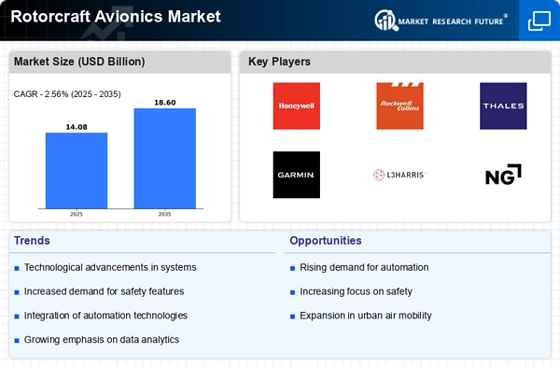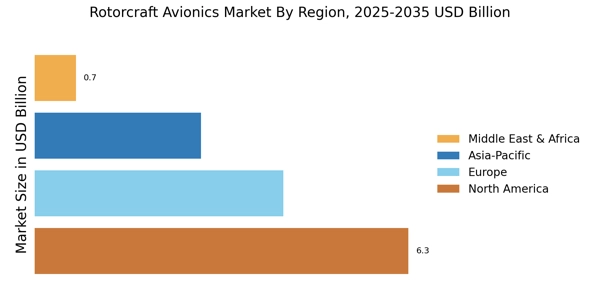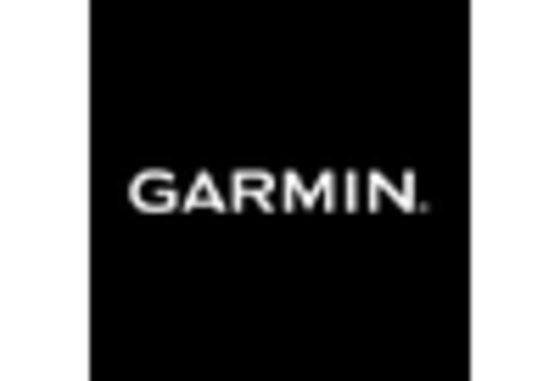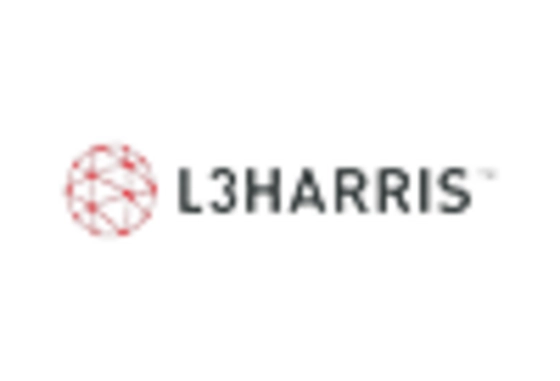Technological Advancements in Avionics
Technological advancements play a pivotal role in shaping the Rotorcraft Avionics Market. Innovations in avionics technology, such as the development of digital flight control systems and enhanced display technologies, are transforming rotorcraft operations. These advancements facilitate improved flight performance, reduced pilot workload, and enhanced decision-making capabilities. The market is witnessing a shift towards more integrated avionics solutions that combine multiple functionalities into a single platform. This trend is expected to drive growth, as operators seek to leverage cutting-edge technologies to enhance operational efficiency and safety. The integration of artificial intelligence and machine learning into avionics systems may further revolutionize the industry, offering unprecedented capabilities.
Regulatory Compliance and Safety Standards
The Rotorcraft Avionics Market is heavily influenced by stringent regulatory compliance and safety standards imposed by aviation authorities. These regulations necessitate the incorporation of advanced avionics systems that enhance safety and operational efficiency. As rotorcraft operators strive to meet these evolving standards, there is a marked increase in the adoption of state-of-the-art avionics technologies. The market is likely to witness a rise in demand for systems that comply with the latest safety protocols, which may include features such as terrain awareness and warning systems. This regulatory landscape not only drives innovation but also ensures that rotorcraft operations adhere to the highest safety benchmarks.
Increased Investment in Rotorcraft Operations
The Rotorcraft Avionics Market is benefiting from increased investment in rotorcraft operations across various sectors. Industries such as oil and gas, search and rescue, and tourism are recognizing the value of rotorcraft for their operational needs. This influx of investment is likely to drive demand for advanced avionics systems that enhance the capabilities of rotorcraft. As operators seek to optimize their fleet performance and ensure safety, the adoption of sophisticated avionics solutions becomes essential. Market analysts suggest that this trend could lead to a substantial increase in the overall market size, as more operators invest in upgrading their avionics systems to remain competitive.
Rising Demand for Unmanned Rotorcraft Systems
The Rotorcraft Avionics Market is witnessing a rising demand for unmanned rotorcraft systems, commonly known as drones. This trend is driven by the growing applications of unmanned systems in sectors such as agriculture, surveillance, and logistics. As these systems become more prevalent, there is a corresponding need for advanced avionics technologies that ensure safe and efficient operation. The market for unmanned rotorcraft avionics is expected to expand significantly, with projections indicating a growth rate that could exceed 10% annually. This shift towards unmanned systems not only reflects changing operational paradigms but also highlights the potential for innovation within the rotorcraft avionics sector.
Growing Demand for Advanced Navigation Systems
The Rotorcraft Avionics Market is experiencing a notable surge in demand for advanced navigation systems. This trend is primarily driven by the increasing need for precision in flight operations and enhanced situational awareness. As rotorcraft are utilized in diverse applications, including emergency medical services and law enforcement, the integration of sophisticated navigation technologies becomes paramount. The market for navigation systems is projected to grow significantly, with estimates suggesting a compound annual growth rate of over 5% in the coming years. This growth is indicative of the industry's shift towards more reliable and efficient navigation solutions, which are essential for operational safety and efficiency in rotorcraft operations.


















Leave a Comment